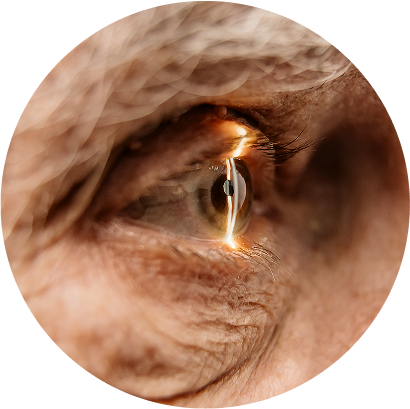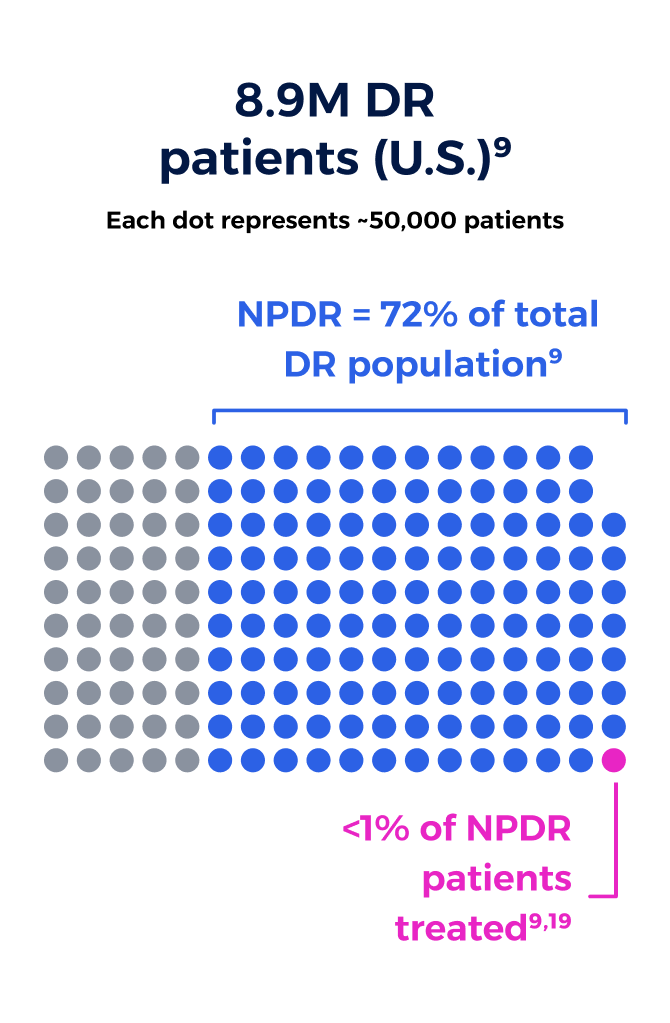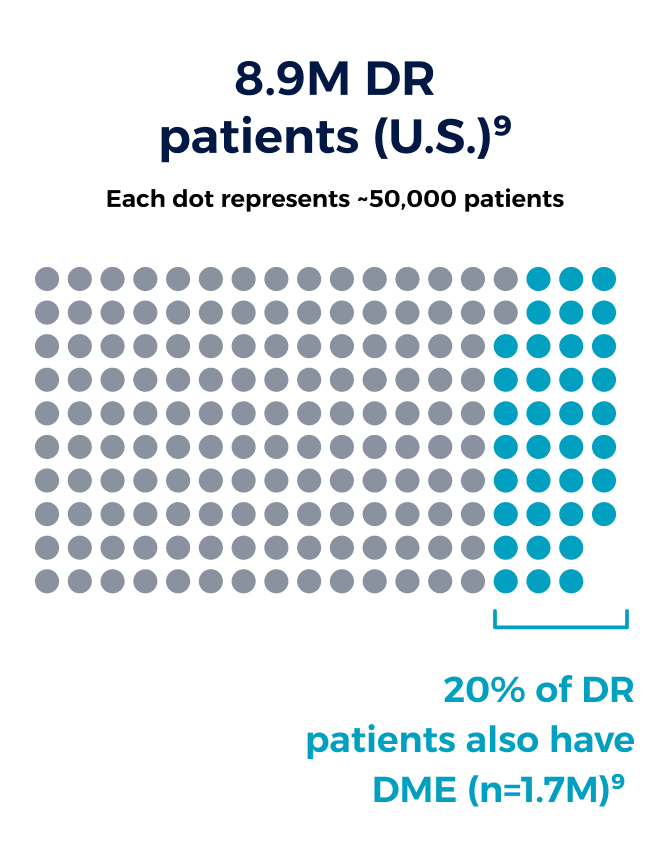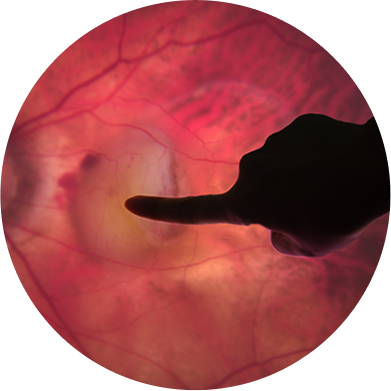Retinal disease is one of the leading causes of blindness1,2


DISEASE BURDEN
More than 410 million people globally suffer from some form of retinal disease3
The prevalence of retinal disease in the U.S.
1.8M
Americans9
Wet Age-Related Macular Degeneration (AMD)
6.4M
Americans9
Non-Proliferative Diabetic Retinopathy (NPDR)
1.7M
Americans9
Diabetic Macular
Edema (DME)

Wet AMD is the leading cause of blindness in the older U.S. population8
AMD has two basic clinical categories, dry AMD and wet (neovascular) AMD. While wet AMD affects only 10-15% of patients with AMD, it accounts for more severe AMD-related vision loss compared to dry AMD.10
Without prompt and ongoing treatment to control fluid buildup, patients may permanently lose their vision. However, with proper treatment, patients may be able to maintain their vision for some time and may temporarily regain lost sight.11-13
Wet AMD has a significant impact on the lives of patients14
KEY*
- Adults with wet AMD
- Adults without wet AMD
*Wet AMD is most common in adults 65+8
**Range of 8%-20% across studies
Depressive Symptoms
34%15
20%15**
Daily Assistance
29%15
7%15
Fall Rate
16%15
8%15

Diabetic retinopathy (DR) is a leading cause of vision loss in the working-age population15
DR may affect up to ~50% of diabetic patients over their lifetime and can progress from NPDR stages to proliferative stages (PDR)6,17,18
Fewer than 1% of the 6.4 million NPDR patients in the U.S. receive treatment today, despite the availability of anti-VEGF therapies, largely due to the burden of frequent injections.9,19,20



DME is also a leading cause of vision loss in the working-age population16,17
In patients with DME, blood vessels in the eyes leak and start to swell, which can cause vision loss or blindness16,18


WET AMD TREATMENT BURDEN
Current treatment imposes a significant burden on patients and care partners15
Patient Burden
90% of patients currently require injections every 1-3 months, impacting and disrupting lives14,19
Care Partner Burden
Up to 12 days off from work per year may be needed from care partners for treatment visits19
Poor Long-Term Outcomes
Frequent injections may result in decreased adherence and retinal fluid fluctuations, which are associated with poor long-term outcomes21
REDEFINING TREATMENT
We aim to transform the treatment burden by maintaining disease control while reducing the frequency of injections
RETINA EXPERIENCE
Our retina experience will redefine your retina experience
Our team has unmatched expertise and an impressive track record of innovation in retinal disease
clinical trials designed or led by our team
combined years of treating patients with retinal disease
treatment launches across retinal disease

References
1. Wang W, et al. Int J Mol Sci. 2018;19(6):1816. 2. Di Carlo E, et al. J Clin Med. 2021;10(15):3297. 3. Market Scope. 2023 Retinal Pharmaceuticals Market Report: Global Analysis for 2022 to 2028. St. Louis, MO: Market Scope, LLC. 2023. 4. Masland RH. Neuron. 2012;76(2):266-280. 5. Rosenblatt TR, et al. Ophthalmic Surg Lasers Imaging Retina. 2021;52(1):29-36. 6. Wong TY, et al. Nat Rev Dis Primers. 2016;2:16012. 7. Wong WL, et al. Lancet Glob Health. 2014;2(2):e106-e116. 8. Centers for Disease Control and Prevention. Learn About Age-Related Macular Degeneration. Updated November 23, 2020. Accessed December 7, 2022. http://bit.ly/41sECrc. 9. Market Scope. 2024 Retinal Pharmaceuticals Market Report: Wet AMD and Other Exudative Diseases. St. Louis, MO: Market Scope, LLC. 2024. 10. Gehrs KM, et al. Ann Med. 2006;38(7):450-471. 11. Flaxel CJ, et al. Ophthalmology. 2020;127(1):P1-P65. 12. Fleckenstein M, et al. Nat Rev Dis Primers. 2021;7(1):31. 13. Maguire MG, et al. Ophthalmology. 2016;123(8):1751-1761. 14. Gualino V, et al. J Fr Ophtalmol. 2020;43:1047-1053. 15. Varano M, et al. Clin Ophthalmol. 2016;10:257-267. 16. Mohamed Q, et al. JAMA. 2007;298(8):902-916. 17. Duh EJ, et al. JCI Insight. 2017;2(14):e93751. 18. Morello CM. Am J Health Syst Pharm. 2007;64(17 Suppl 12):S3-S7. 19. Market Scope. Ophthalmic Market Trends: Quarterly US Retina Edition. St. Louis, MO: Market Scope, LLC. 2025. 20. Weng CY et al. Ophthalmic Surg Lasers Imaging Retina. 2023;54(11):654-659. 21. Evans RN, et al. JAMA Ophthalmol. 2020;138(10):1109.
